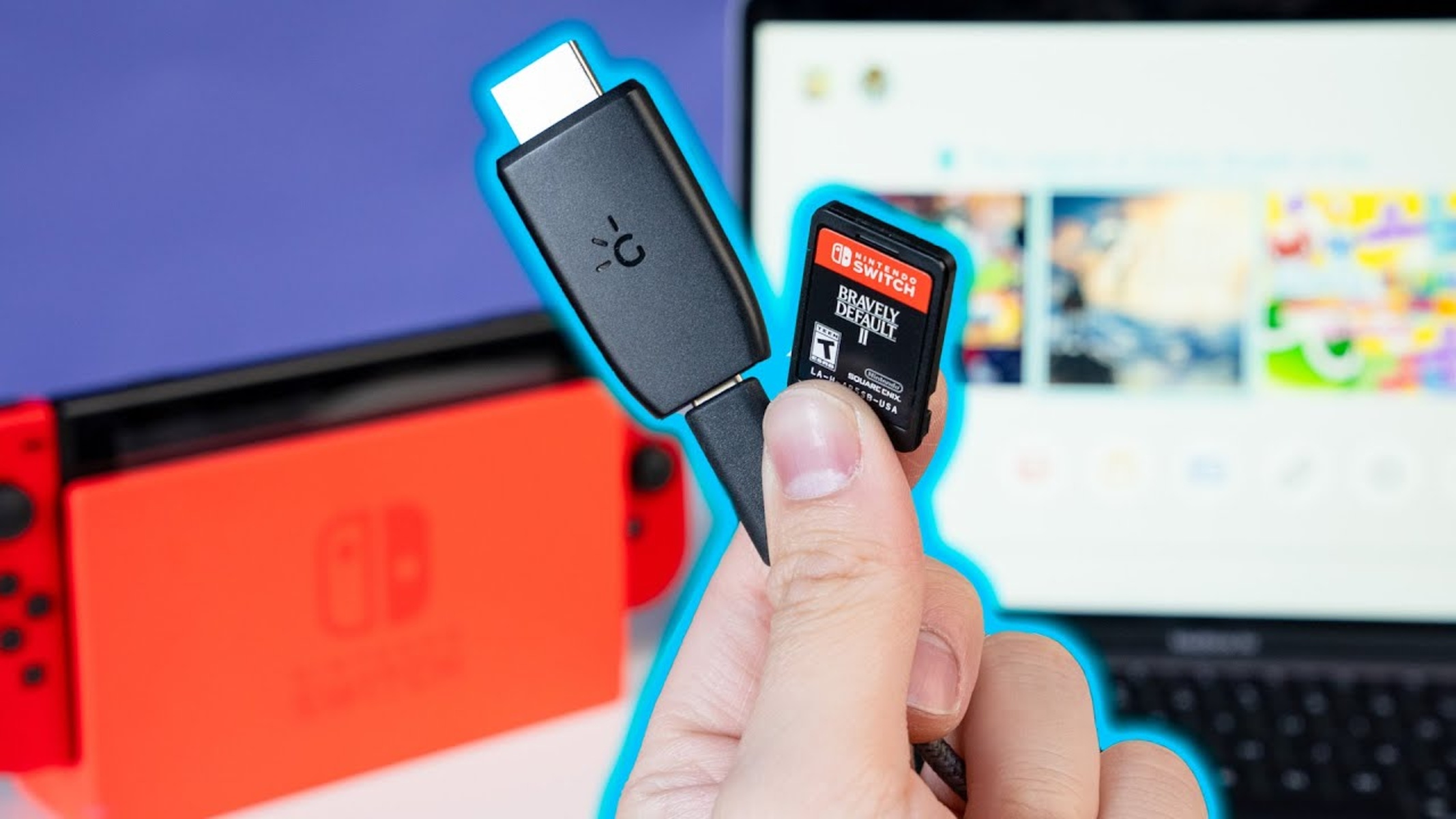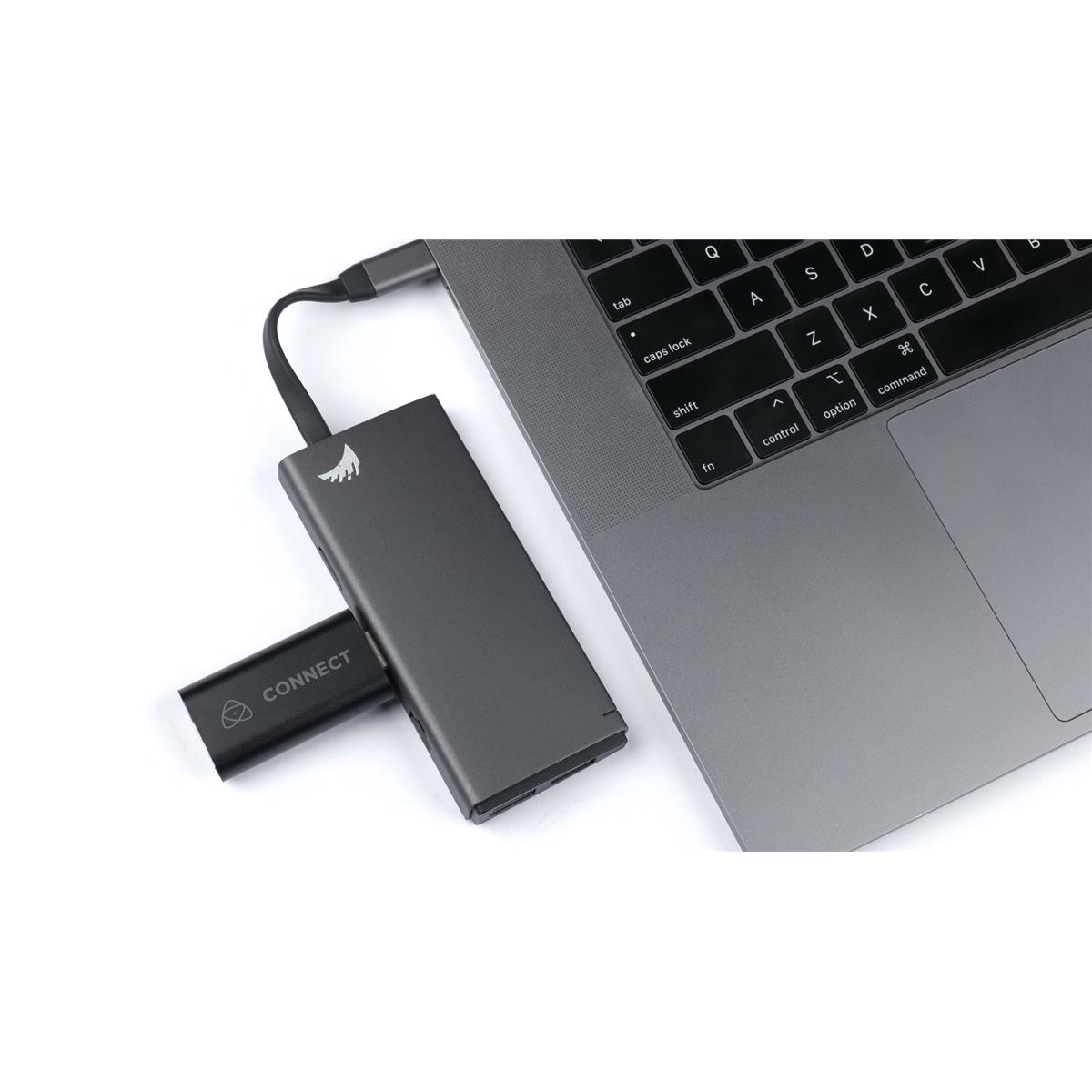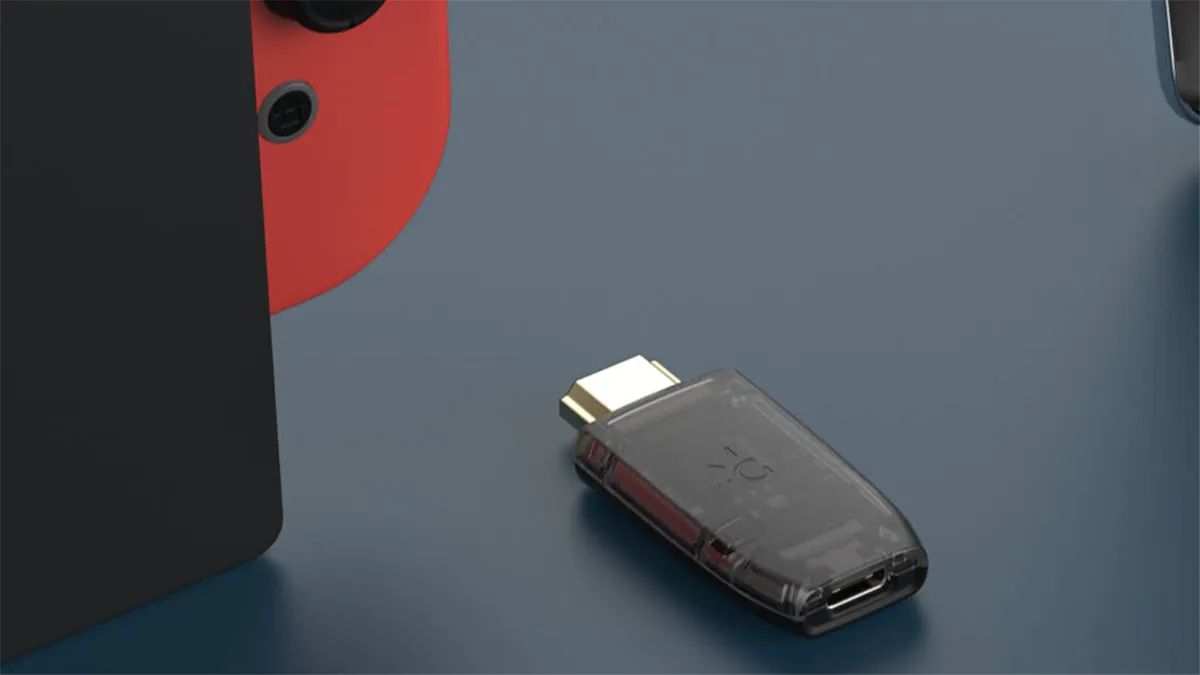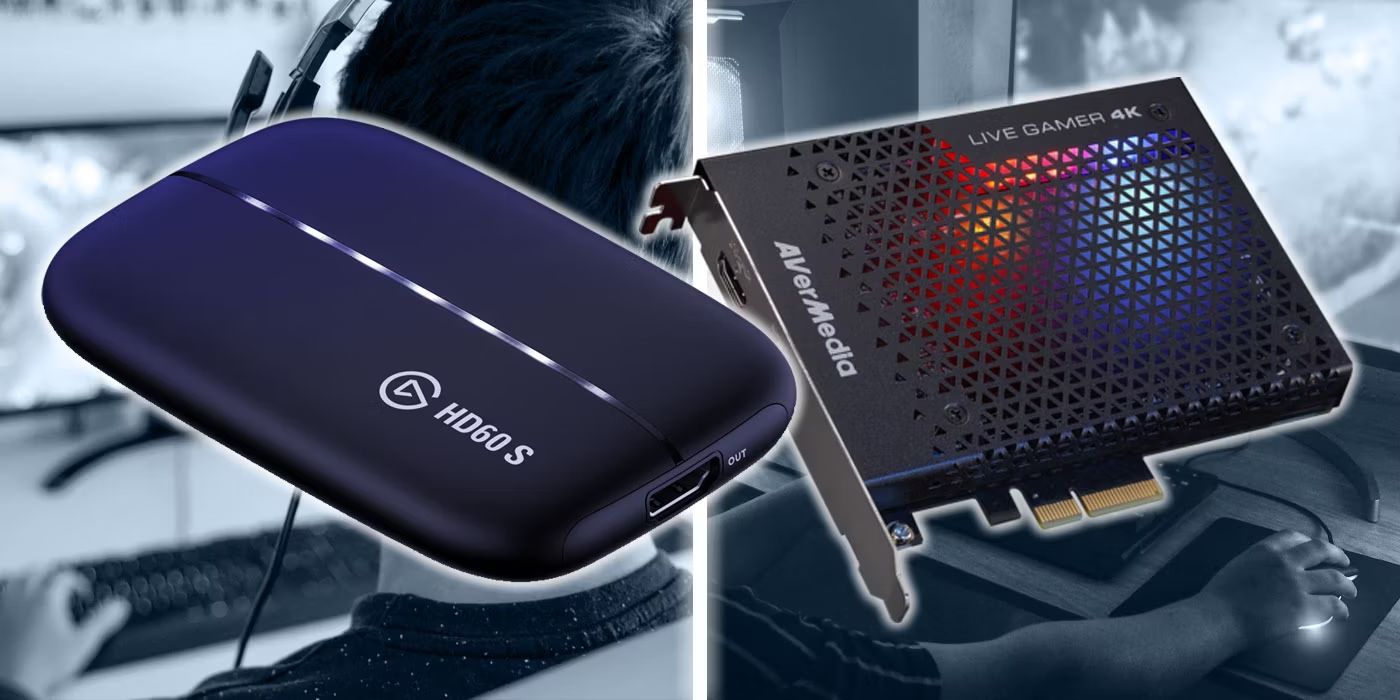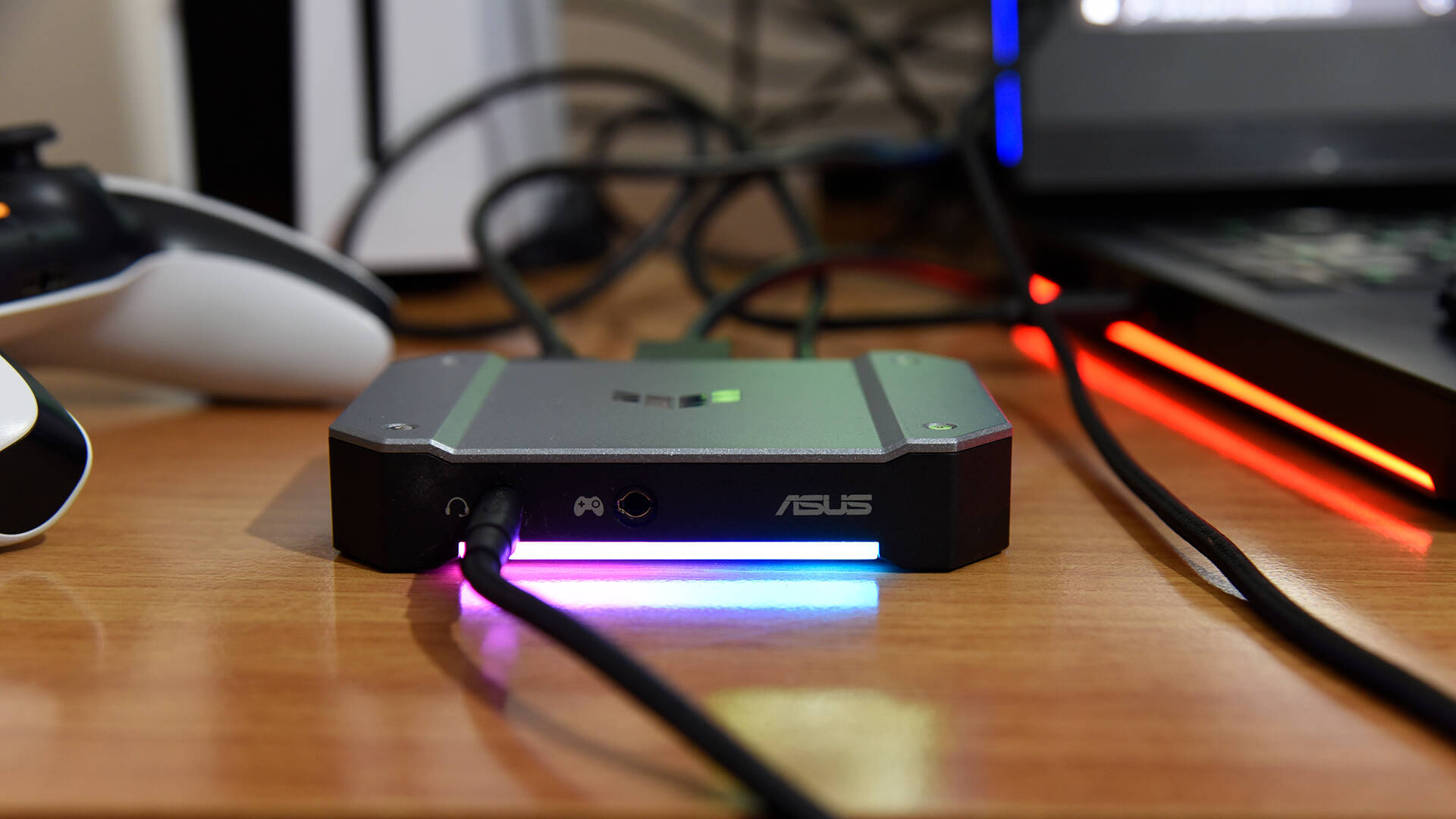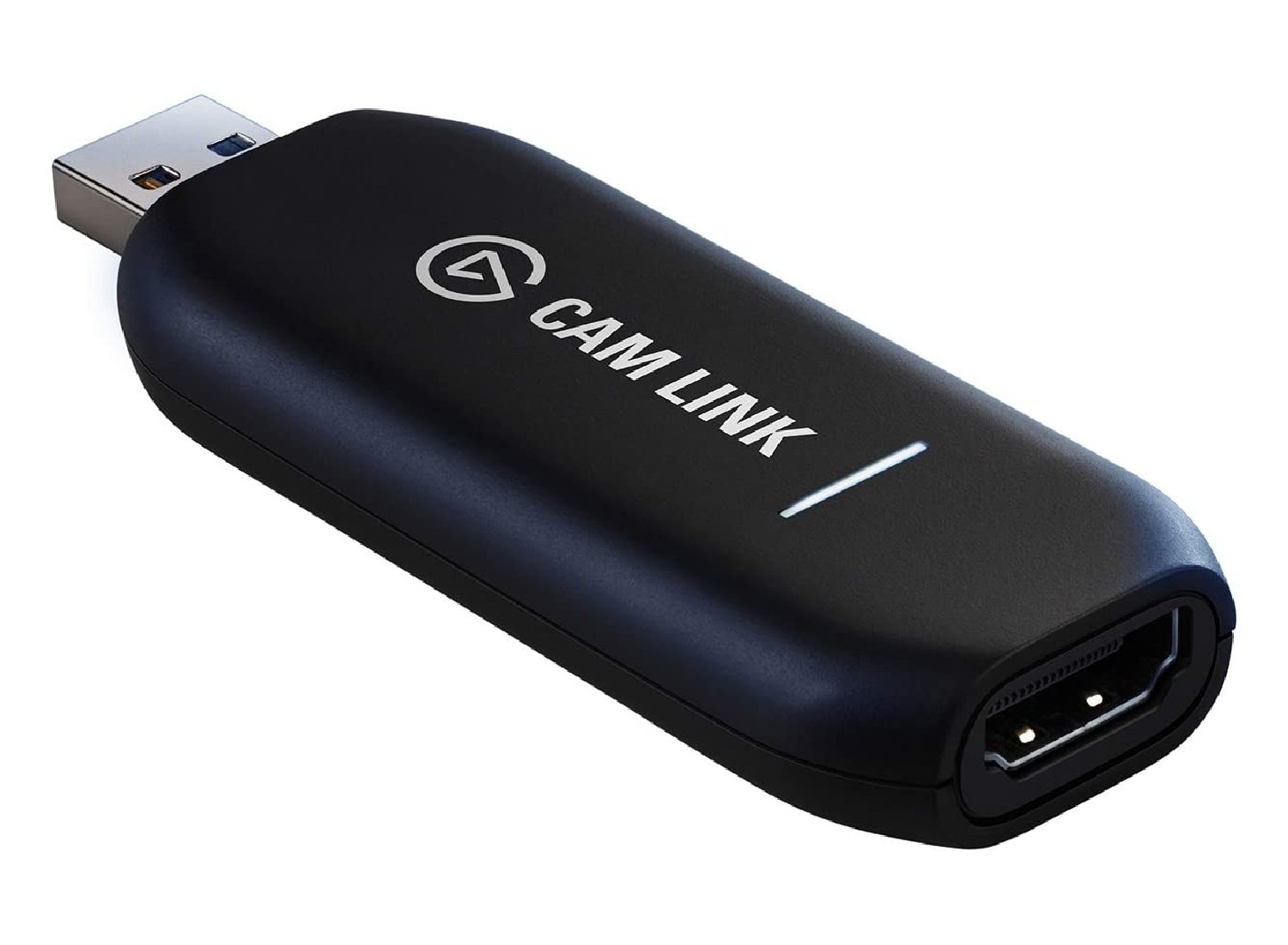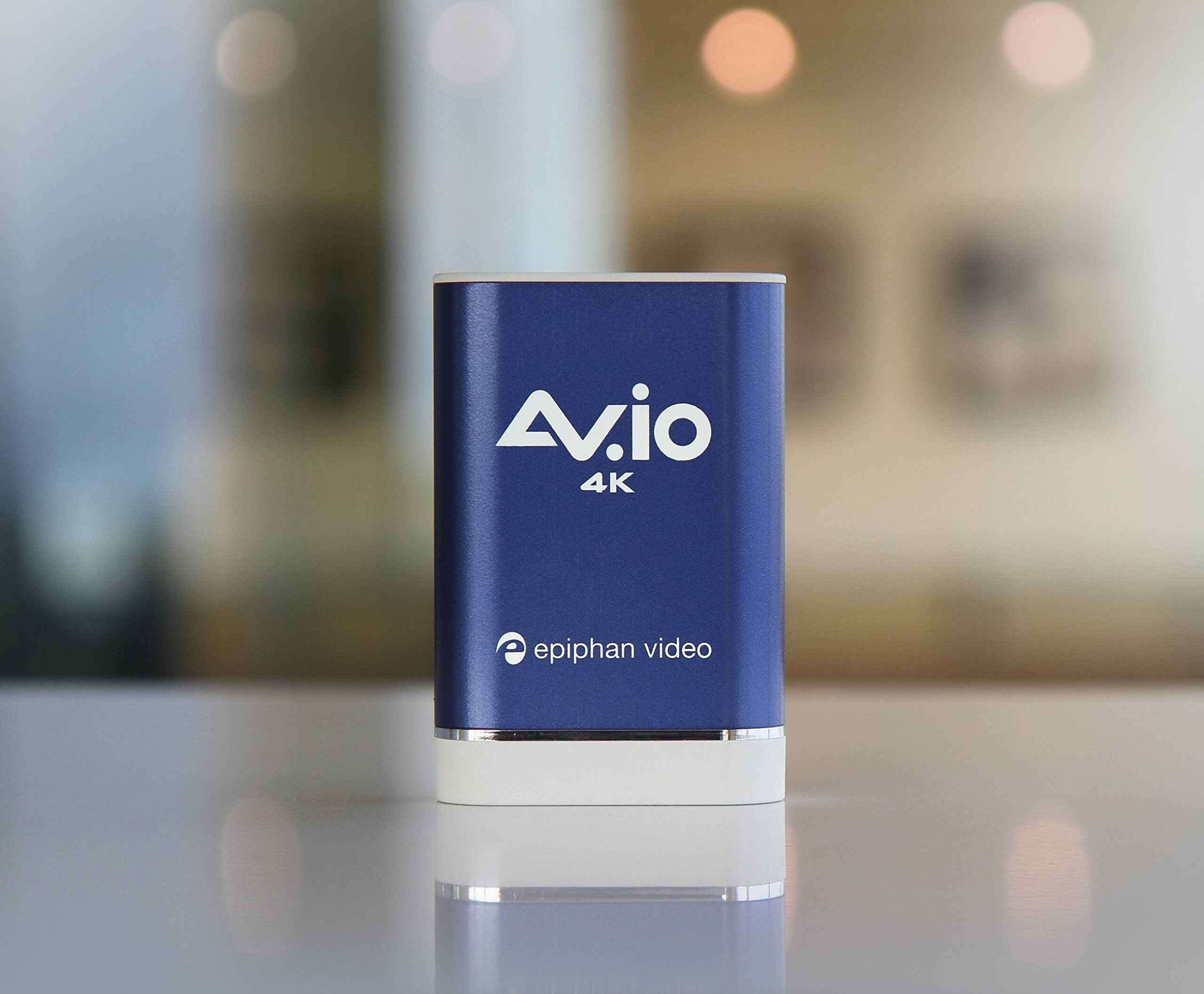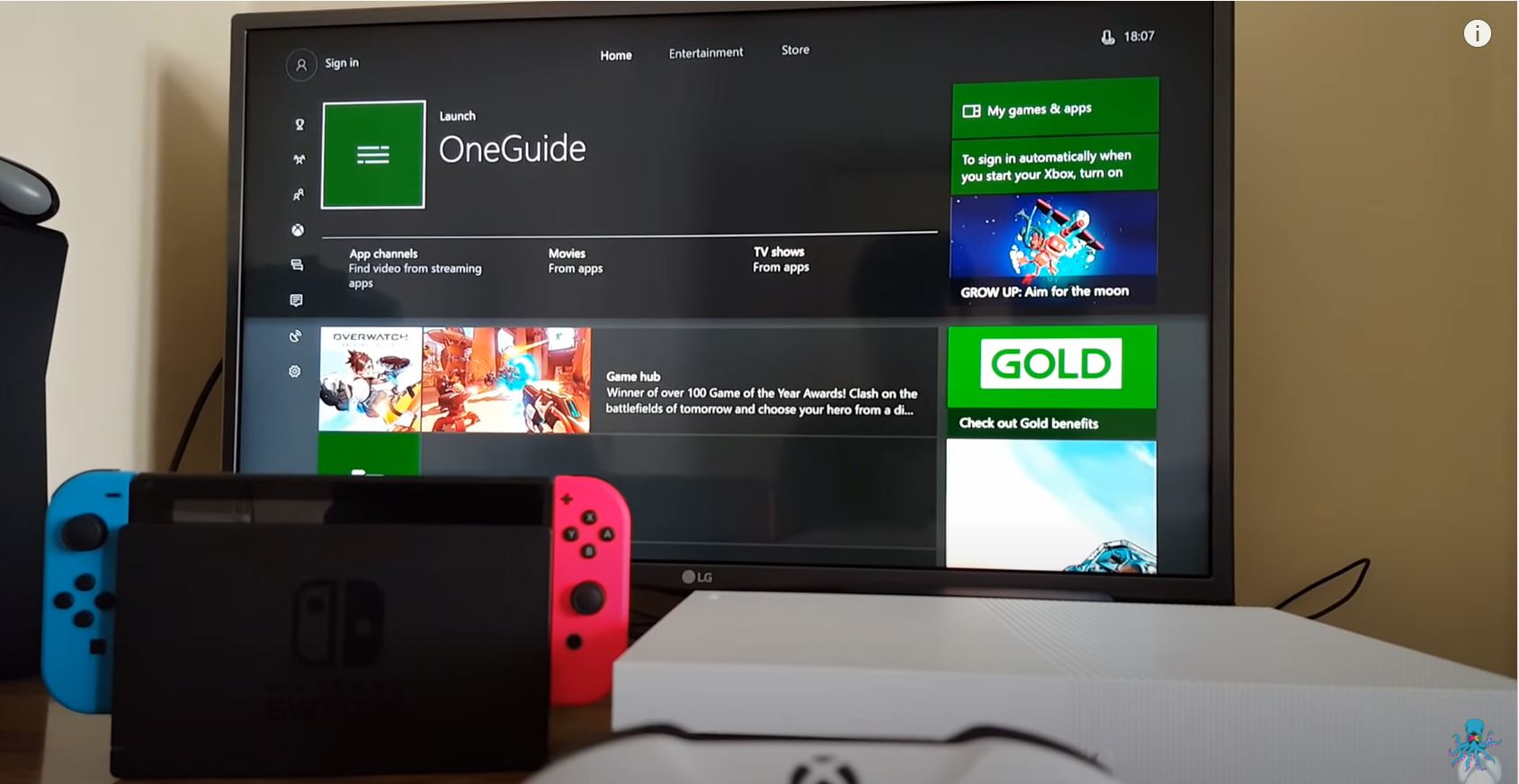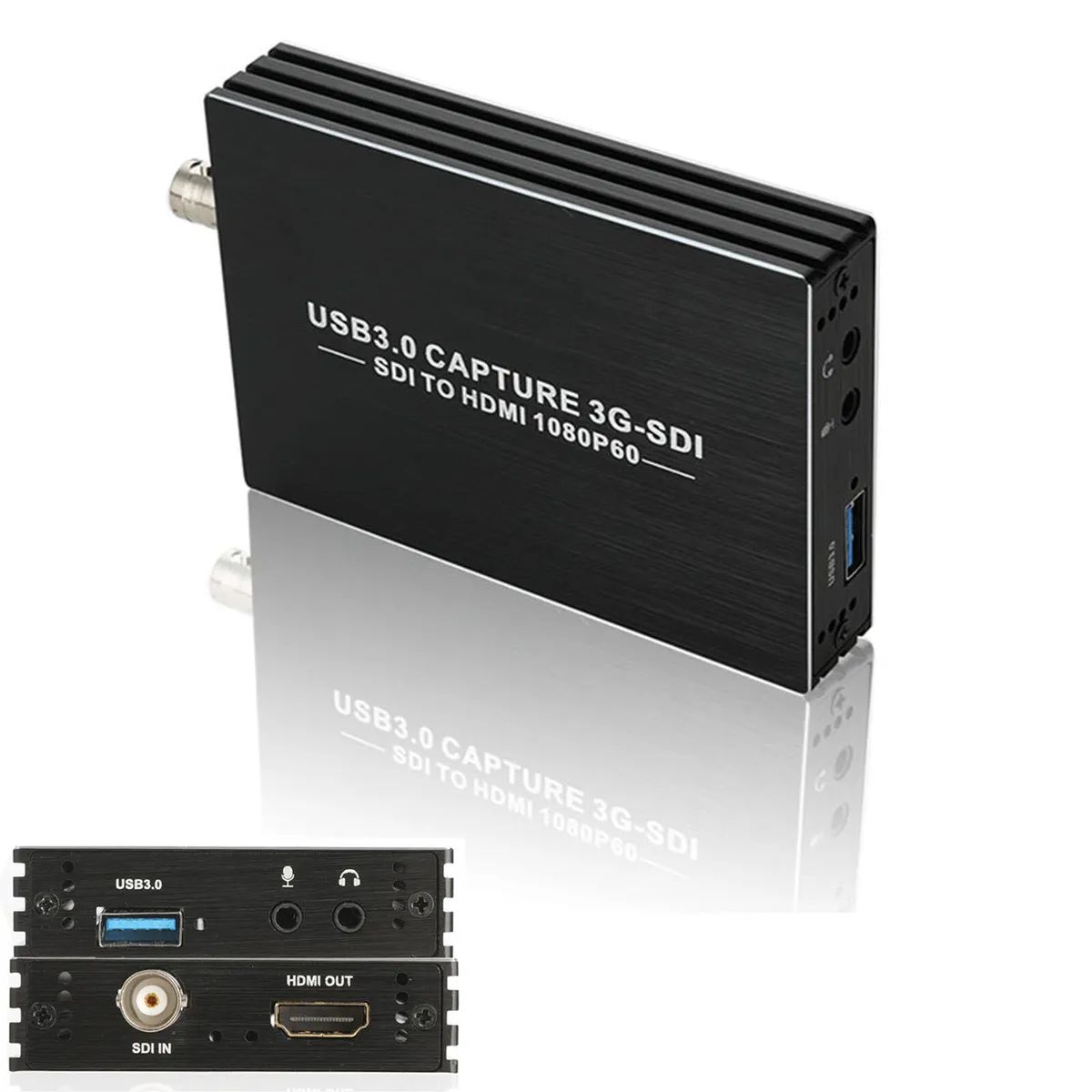Introduction
Welcome to the world of gaming, where innovative technology continues to push the boundaries of immersive experiences. One such advancement is the ability to play Nintendo Switch games on your laptop. Traditionally, this requires the use of a capture card, a device that captures and records the gameplay from your console. However, not everyone has access to a capture card or wants to invest in one. The good news is that playing Nintendo Switch on your laptop without a capture card is indeed possible.
Playing Nintendo Switch games on a laptop without a capture card opens up new possibilities for gamers. Whether you’re a content creator looking to share your gameplay or simply want a larger screen and better controls for your gaming sessions, this method allows you to enjoy your favorite Switch games on a bigger platform.
Before diving into the step-by-step process of playing Switch on your laptop without a capture card, it’s important to note that this method requires certain tools and equipment. Additionally, it may require a bit of technical know-how to set up the required software and configure the settings. However, with a little patience and determination, you’ll be on your way to an enhanced gaming experience.
In this guide, we’ll walk you through the process of playing Nintendo Switch on your laptop without a capture card. We’ll cover everything from connecting your Switch to your laptop to installing the necessary software and configuring the settings. So, let’s get started and unlock a whole new gaming experience!
What is a Capture Card?
A capture card is a hardware device used for capturing and recording the gameplay from a video game console, such as the Nintendo Switch. It is designed to connect between the console and a computer, allowing users to capture, stream, and record their gameplay footage.
One of the key features of a capture card is its ability to capture high-definition video and audio signals from the console. This ensures that the gameplay footage is of the highest quality and can be shared or streamed without any loss in visual or audio fidelity. Capture cards also come with various input and output options, allowing users to connect their consoles to different devices, such as TVs, monitors, or laptops.
In addition to recording gameplay, capture cards often have additional features, such as real-time streaming and live commentary, which enhance the gaming experience for both the player and the audience. These cards also provide a way to capture screenshots, create highlight reels, and edit the captured footage using software tools.
While capture cards are widely used by professional gamers and content creators, they can be quite expensive and may not be accessible to everyone. Additionally, setting up and configuring a capture card can be a complex process that requires technical expertise.
However, if you don’t have a capture card or don’t want to invest in one, there are alternative methods available to play Nintendo Switch games on your laptop. These methods utilize software solutions and network connections to allow you to enjoy your favorite Switch games on a larger screen without the need for a capture card.
In the next section, we’ll explore why playing Switch on your laptop without a capture card can be advantageous and how you can go about doing it.
Why Play Switch on Laptop Without a Capture Card?
Playing Nintendo Switch games on your laptop without a capture card offers several advantages that may make it preferable for certain gamers. Let’s explore a few reasons why you might choose this method:
- Portability: One of the biggest benefits of playing Switch on your laptop is portability. The Nintendo Switch itself is a highly portable console, but being able to connect it to your laptop adds even more convenience. You can take your gaming setup with you wherever you go, whether it’s on a road trip, at a friend’s place, or simply moving around your home.
- Bigger Screen: While the Switch’s handheld screen is decently sized, playing games on a laptop allows for a larger and more immersive experience. Laptop screens generally provide a bigger display area and often have higher resolution options. This means you can appreciate the intricate details, vibrant colors, and stunning visuals of your favorite games in a more expansive way.
- Better Controls: While the Joy-Con controllers included with the Switch offer a unique gaming experience, some players may prefer conventional controller setups. By playing Switch on your laptop, you have the option to connect external controllers, such as Xbox or PlayStation controllers, which can provide a more comfortable and familiar gaming experience. This can be particularly beneficial during long gaming sessions.
- Recording and Streaming: Although we’re exploring how to play Switch on a laptop without a capture card, that doesn’t mean you can’t still record or stream your gameplay. There is software available that allows you to capture and broadcast your gameplay directly from your laptop, without the need for additional hardware. This opens up opportunities for content creation and sharing your gaming experiences with others.
- Flexibility and Options: By playing Switch on your laptop without a capture card, you have the flexibility to experiment with different software and settings. You can easily switch between gaming and other tasks on your laptop, such as browsing the internet or chatting with friends. This versatility allows you to customize your gaming experience and adapt it to your own preferences.
Overall, playing Switch on your laptop without a capture card offers convenience, better visuals, enhanced controls, and the ability to record or stream your gameplay. It’s a cost-effective and practical alternative for gamers who want to maximize their Nintendo Switch experience without investing in additional hardware.
Now that you understand the advantages of playing Switch on your laptop without a capture card, let’s delve into the tools and equipment you’ll need to get started.
Required Tools and Equipment
Before you can start playing Nintendo Switch games on your laptop without a capture card, there are a few essential tools and equipment that you’ll need to gather. Here’s a list of what you’ll require:
- Nintendo Switch: Of course, you’ll need the Nintendo Switch console itself. This versatile gaming device will serve as the hub for your gaming experience.
- Laptop: You’ll need a laptop with a decent processor and graphics capabilities to handle the gameplay. Make sure your laptop meets the minimum system requirements for running games smoothly.
- HDMI Cable: To connect your Nintendo Switch to your laptop, you’ll need an HDMI cable. This cable carries both audio and video signals from the console to the laptop.
- USB Type-C to HDMI Adapter: Depending on the ports available on your laptop, you may require a USB Type-C to HDMI adapter to connect the HDMI cable to your laptop. This adapter allows you to connect the HDMI cable to the USB Type-C port on your laptop.
- Stable Internet Connection: A stable internet connection is essential for playing Nintendo Switch games on your laptop without a capture card. This is particularly important if you plan to play online multiplayer games or stream your gameplay.
- Streaming Software (optional): If you want to record or stream your gameplay, you’ll need streaming software. There are various options available, such as OBS Studio, Streamlabs OBS, or XSplit, which allow you to capture and broadcast your gameplay seamlessly.
Once you have gathered all the necessary tools and equipment, you’re ready to start setting up your Nintendo Switch to play on your laptop. The following sections will guide you through the step-by-step process of connecting your Switch to your laptop, installing the required software, and configuring the settings to ensure a smooth gaming experience.
So, let’s move on to the next section and get started with the setup process!
Step 1: Connecting Your Switch to Your Laptop
The first step in playing Nintendo Switch games on your laptop without a capture card is to establish a physical connection between your Switch console and your laptop. Here’s how you can do it:
- Power off the Switch: Before connecting your Switch to your laptop, make sure it is powered off to avoid any potential issues.
- Locate the HDMI port: Find the HDMI port on your Switch. It is located at the bottom of the console, near the USB Type-C charging port.
- Connect the HDMI cable: Take one end of the HDMI cable and plug it into the HDMI port on your Switch. Make sure it is firmly connected.
- Connect the other end to your laptop: Depending on the available ports on your laptop, you may need to use a USB Type-C to HDMI adapter. Plug the HDMI cable or adapter into the HDMI port of your laptop.
- Select the correct input source: Turn on your laptop and switch on the display. If necessary, set the display input source to the HDMI port where your Switch is connected. This step ensures that the laptop recognizes the video and audio signals from the console.
- Power on the Switch: Power on your Switch console and wait for your laptop to detect the HDMI connection. You should now see your Switch’s display mirrored on your laptop screen.
Once you have successfully connected your Switch to your laptop, you’re ready to move on to the next step: installing the required software. This software will enable your laptop to recognize and process the gameplay input from the Switch and ensure a smooth gaming experience. In the next section, we’ll cover the software installation process in detail.
Let’s proceed to Step 2 and get you set up with the necessary software!
Step 2: Installing the Required Software
Now that you have successfully connected your Nintendo Switch to your laptop, the next step is to install the required software. This software will enable your laptop to recognize and process the gameplay input from the Switch. Here’s how you can install the necessary software:
- Choose streaming software: If you plan to record or stream your gameplay, you’ll need streaming software. There are several options available, such as OBS Studio, Streamlabs OBS, or XSplit. Choose the software that best suits your needs and download it from their official website.
- Install streaming software: Once you have downloaded the streaming software, run the installer and follow the on-screen instructions to install it on your laptop. Make sure to choose the appropriate settings and options based on your preferences.
- Configure streaming software: After the installation is complete, launch the streaming software and navigate to the settings or preferences section. Configure the software as per your requirements, including video and audio settings, streaming quality, capture sources, and any other desired customization options.
- Connect your Switch to the software: In the streaming software, locate the capture device settings. Connect your Nintendo Switch to the software by selecting it as the capture source. Follow any additional instructions provided in the software to establish the connection.
- Test the software settings: Before proceeding, it’s important to test the software settings to ensure that everything is working correctly. Start your Nintendo Switch and check if the gameplay is being displayed on your laptop screen through the streaming software. Make any necessary adjustments to the settings to optimize the performance and quality of the gameplay capture.
Once you have successfully installed and configured the required software on your laptop, you’re ready to move on to the next step: configuring the settings to ensure a seamless gaming experience. In the following section, we’ll guide you through the process of configuring the settings to get the most out of your gameplay.
Let’s move on to Step 3 and fine-tune the settings for an enhanced gaming experience!
Step 3: Configuring the Settings
With your Nintendo Switch connected to your laptop and the required software installed, it’s time to configure the settings to ensure a smooth and enjoyable gaming experience. This step involves adjusting various settings and options to optimize performance and customize your gameplay. Here’s how you can configure the settings:
- Video Settings: Access the video settings in the streaming software and adjust the resolution, frame rate, and video bitrate according to your preferences. Higher resolutions and frame rates will result in a more visually appealing experience, but keep in mind that they may require more processing power and a stable internet connection.
- Audio Settings: In the streaming software, locate the audio settings and make sure the audio source is set to capture the audio from your Nintendo Switch. Adjust the volume levels and any other audio-related settings as needed to achieve the desired balance between game audio and any accompanying commentary or music.
- Control Configuration: If you’re using an external controller or keyboard for playing the Switch games on your laptop, make sure to configure the controls in the streaming software or game settings. Assign the appropriate buttons and keys to match the controls of the game you’re playing.
- Network Settings: If you plan to play online multiplayer games or stream your gameplay, ensure that your laptop is connected to a stable and high-speed internet connection. A wired Ethernet connection is recommended for the best performance, but a strong Wi-Fi connection can also suffice. Check the network settings in the streaming software and adjust any options related to streaming quality, latency, or network optimization.
- Test the Settings: Before diving into a full gaming session, it’s essential to test the configured settings. Launch a Nintendo Switch game and play it for a while to verify that everything is working as intended. Pay attention to the video quality, audio synchronization, controls responsiveness, and overall performance. Adjust any settings if necessary until you’re satisfied with the results.
By configuring the settings appropriately, you can ensure that your Nintendo Switch games run smoothly on your laptop without any hiccups or disruptions. Take some time to experiment with different settings to find the optimal balance between visuals, performance, and convenience.
With the settings configured, you’re now ready to test the connection and jump into an exciting gaming experience. The next section will provide you with some tips and troubleshooting techniques to help you along the way.
Proceed to Step 4 to test the connection and explore some useful tips!
Step 4: Testing the Connection
After connecting your Nintendo Switch to your laptop, installing the required software, and configuring the settings, it’s crucial to test the connection to ensure everything is functioning as expected. This step will help you confirm that the gameplay is being displayed correctly on your laptop and that the controls are responsive. Here’s how you can test the connection:
- Launch a Nintendo Switch game: Start the game you want to play on your Nintendo Switch. Make sure the game is running smoothly on the console.
- Observe the mirrored display: Look at your laptop screen and verify that the gameplay from your Nintendo Switch is being mirrored accurately. The game should be displayed on your laptop with minimal delay or lag.
- Check audio synchronization: Pay attention to the audio coming from the game on your Nintendo Switch. Ensure that the audio is in sync with the gameplay display on your laptop. Adjust the audio settings in the streaming software or game if needed.
- Test control responsiveness: Use the controller or keyboard connected to your laptop to control the game. Test the responsiveness of the controls and make sure there is no noticeable input delay. Adjust the control settings if necessary to achieve the desired responsiveness.
- Play the game: Dive into the game and play it for a while to evaluate the overall performance. Take note of any issues like stuttering, freezing, or graphical glitches. These issues may indicate a problem with the connection or the settings that need further adjustment.
- Make necessary adjustments: If you encounter any issues during the testing phase, review the setup steps, software settings, and connection quality. Make appropriate adjustments, such as altering video bitrate, optimizing network settings, or updating drivers, to resolve any issues you identified.
By thoroughly testing the connection and checking the gameplay, audio, and control responsiveness, you can ensure an optimal gaming experience. Don’t hesitate to fine-tune the settings further or seek assistance from online communities or support forums if you encounter persistent issues or need guidance.
With the connection tested and functioning smoothly, you are now ready to immerse yourself in captivating Nintendo Switch games right on your laptop screen. In the next section, we’ll provide you with some helpful tips and troubleshooting techniques to enhance your gaming experience.
Let’s move on to the Tips and Troubleshooting section and unlock the full potential of playing Nintendo Switch on your laptop without a capture card!
Tips and Troubleshooting
As you embark on your gaming journey by playing Nintendo Switch on your laptop without a capture card, here are some helpful tips and troubleshooting techniques to enhance your experience and overcome any potential challenges:
1. Ensure a Stable Network Connection: A stable and reliable internet connection is crucial for smooth gameplay and online functionalities. If you experience lag or disconnections, try connecting your laptop to the internet via a wired Ethernet connection or move closer to your Wi-Fi router.
2. Optimize Streaming Software Settings: Experiment with different settings in your streaming software to find the optimal balance between video quality and performance. Adjust the resolution, frame rate, and bitrate to match your laptop’s capabilities and internet speed.
3. Consider an External Monitor: If your laptop’s screen is not large enough or doesn’t offer the desired visual quality, consider connecting an external monitor to enhance your gaming experience. This will provide a bigger display and potentially better graphics.
4. Use a Wired Controller: Although the Joy-Con controllers provided with the Nintendo Switch are functional, you may have a more comfortable gaming experience with a wired or wireless external controller. Connect your preferred controller to your laptop for a familiar and ergonomic gaming setup.
5. Manage System Resources: Close any unnecessary background applications on your laptop to free up system resources and ensure smooth gameplay. Running multiple resource-intensive programs simultaneously can impact the gaming performance.
6. Update your Software: Keep your Nintendo Switch console, laptop, and streaming software up to date with the latest firmware and software updates. New updates often include bug fixes, performance improvements, and new features that can enhance your gaming experience.
7. Seek Community Support: Engage with online gaming communities and forums to seek advice and support from fellow gamers who have experience playing Nintendo Switch on their laptops. They can provide valuable insights, tips, and troubleshooting suggestions to overcome any challenges.
8. Have Patience and Experiment: Playing Nintendo Switch on your laptop without a capture card may require some trial and error. Be patient and willing to experiment with different settings, software configurations, and equipment to find the optimal setup that works best for you.
If you encounter persistent issues or technical difficulties, consult the documentation and support resources provided by your streaming software or reach out to their customer support for further assistance.
By following these tips and being proactive in troubleshooting any issues, you can unlock the full potential of playing Nintendo Switch on your laptop without a capture card. Enjoy the immersive gaming experience and have fun exploring the vast library of exciting games available on the Nintendo Switch!
Conclusion
Playing Nintendo Switch games on your laptop without a capture card opens up new possibilities for gamers. By following the steps outlined in this guide, you can enjoy a larger screen, better controls, and the ability to record or stream your gameplay. It’s an accessible and cost-effective alternative to playing Switch games on a traditional TV setup.
Starting with the physical connection between your Switch and laptop, you learned how to connect the HDMI cable and configure the necessary software. By installing streaming software, configuring settings, and testing the connection, you can ensure a smooth gaming experience.
Throughout the process, keep in mind the tips and troubleshooting techniques provided to optimize your setup. From ensuring a stable network connection to experimenting with different settings, these tips will help you overcome any challenges you may encounter.
Remember, playing Nintendo Switch on your laptop without a capture card requires patience and a willingness to explore different options. By fine-tuning the settings and seeking support from the gaming community, you can customize your setup to meet your preferences and enjoy a seamless gaming experience.
So, grab your Nintendo Switch, connect it to your laptop, and embark on exciting gaming adventures like never before. With a larger screen, enhanced controls, and the ability to share your gameplay with others, playing Nintendo Switch on your laptop without a capture card truly expands the boundaries of your gaming experience.
Happy gaming!







